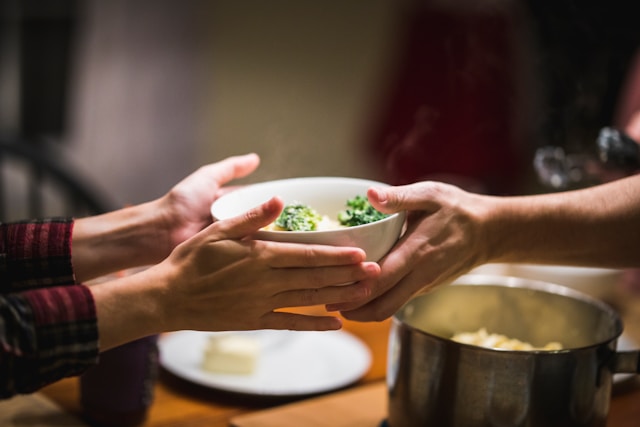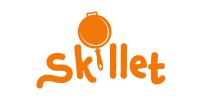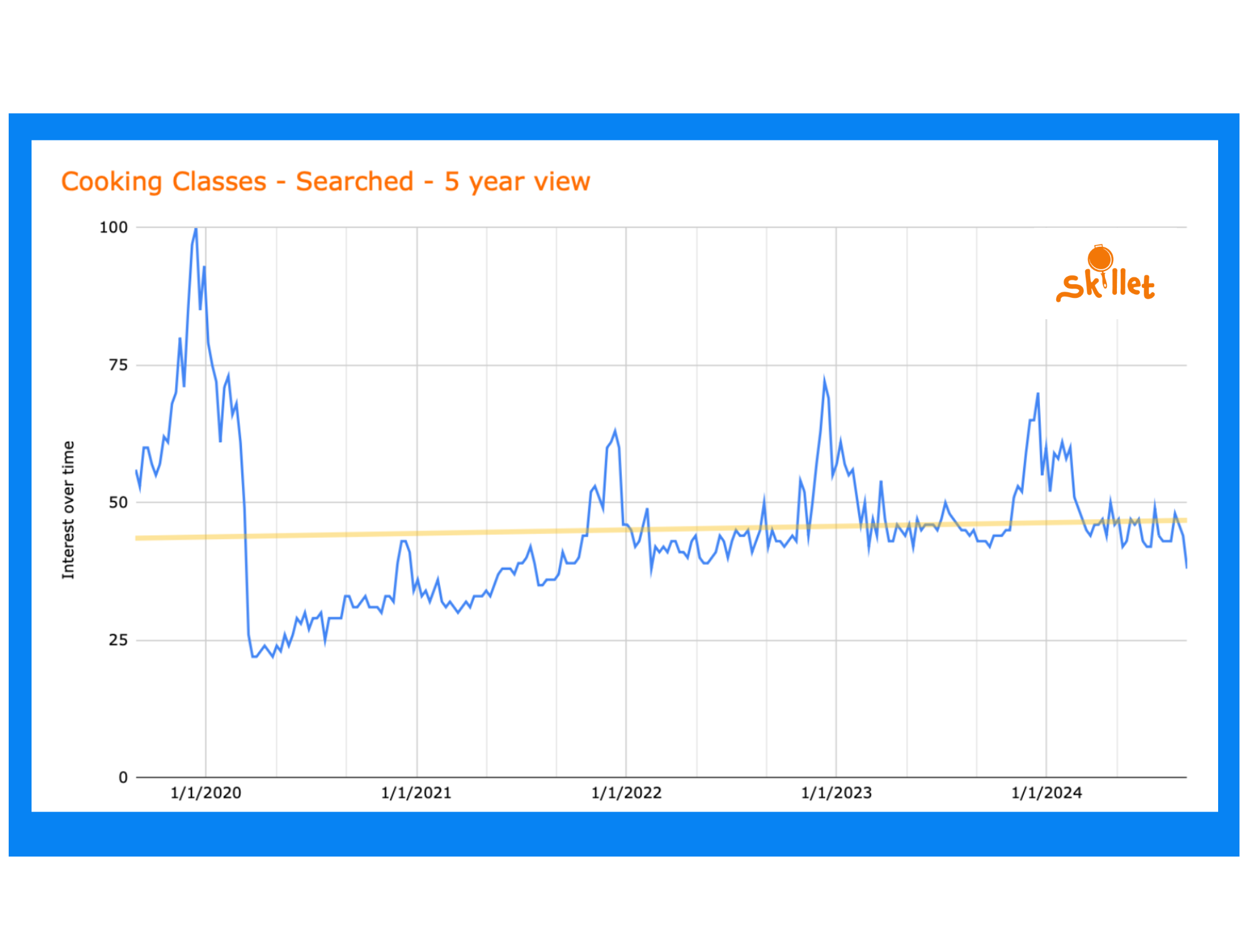The New Normal: A Stabilizing Trend with a Positive Outlook
As the world gradually adapts to a post-pandemic environment, the demand for cooking classes has been stabilizing, showing a slow but steady upward trend from 2022 into 2024. You can see the yellow trend line on the graph showing a slow but steady upward climb.
The consistent interest levels, hovering around scores of 40 to 60, suggest a healthy market that is likely to continue growing which is good news for all of us.
Key Data Points:
- Steady Growth: Starting in early 2023, the data indicates a subtle but consistent increase in interest. By mid-2024, scores are trending upwards, pointing to a renewed enthusiasm for culinary education. (Woo!)
- Diversification: Instructors who have diversified their offerings—such as integrating online content, personalized tutorials, or themed classes—have likely contributed to this growth. More on trending content and diversified approaches in a future Culinary Connect article.
Takeaway for Instructors:
- Build Resilience Into Your Classes: There’s no such thing as, “Future-Proof,” but building resilience and diversification into your business offerings will help you to stay ahead of the curve. Consider expanding beyond traditional formats. Whether it’s through hybrid classes that combine in-person and online learning or by tapping into niche markets like vegan, sustainable, low-packaging/low impact, there are numerous opportunities to cater to evolving consumer preferences.
Actionable Steps for Cooking Class Instructors
1. Embrace Online Platforms: The pandemic has underscored the importance of having a digital presence. With the changes in algorithms on social media platforms and how Google handles cookies, promoting our offerings on our socials, our websites and on marketplaces like
Skillet will help scoop up potential students where they are. Also, consider offering virtual classes or creating pre-recorded content that students can access at their convenience. (And think about it, your pre-recorded classes could be sold as bundles or subscriptions for residual income! There’s no reason you can’t make money on the work you have already done! And, if you’re doing this already,
write to let us know. We’re planning a podcast on the topic in early 2025.
2. Leverage Seasonal Trends: Plan your marketing campaigns around the holiday seasons when interest in cooking classes typically peaks. Offer early bird discounts or gift certificates to attract more students. You can see in the graph when demand begins to spike so you can plan accordingly.
3. Diversify Your Offerings: Stay relevant by continuously updating your curriculum. Incorporate trendy cuisines, dietary preferences, or even cooking classes that cater to families and kids.
4. Analyze Your Own Data: Monitor the popularity of your class topics. Pay attention to the timing that worked for, you, specific cuisines or cooking techniques and when times were busiest. This will help you stay ahead and adapt your classes to what people are searching for.
As we know from our collective experience, the cooking class industry is resilient and adaptable, and the data shows what looks to be a bright future ahead.
By paying attention to the trends, cooking class instructors and culinary experience providers can better position themselves as experts in the field, ensuring that our classes are not only in demand, but are also highly valued by our students.
Whether through adapting to new norms, leveraging seasonal spikes in interest, or diversifying not only our offerings, but how and where we promote them, there are numerous strategies that can help us as cooking class instructors thrive in this evolving environment.
What has your reality been? Reach out to either
Keith or
Jenn to share your story and be sure to take advantage of Skillet’s low rates on scheduled cooking classes or monthly ads, just in time for the holidays. Select Sign In at the top to register your business now.


